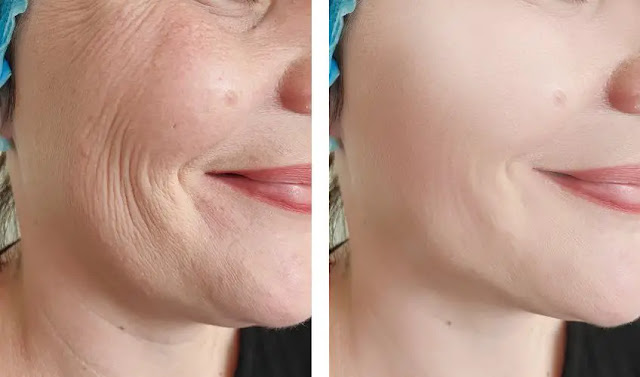If you are contemplating a Botox procedure and wondering about how long it takes for Botox to take effect, it varies based on the dosage and the treated area. The results of Botox are also influenced by your body's metabolism rate.
{tocify}
What is Botox?
Botox is an FDA-approved cosmetic procedure. It involves the use of a purified type of botulinum toxin A to temporarily enhance appearance. The same toxin is used to manufacture Botox injections (1).
Uses of Botox
Botox works by temporarily diminishing moderate to severe frown lines (both horizontal and vertical) between the eyebrows, commonly known as glabellar lines. When injected into muscles, it blocks the nerve signals that cause muscle contractions, smoothing the frown lines for up to four months (2). This treatment is suitable for adults under the age of 65. Glabellar lines in adults under 65 are linked to the corrugator and procerus muscles.
How Does Botox Works?
Botox helps achieve a smoother, more youthful look by relaxing the muscles under the skin to reduce tension. Its effects typically last around 4 months, but this can vary depending on the individual's response and time since the last treatment. The concentration and method of Botox administration also impact the results. A higher dose in a specific area results in a longer effect, whereas a lighter dose might only last 6 to 8 weeks, while a heavier dose can last over six months. Therefore, it's crucial to discuss your desired outcome, dose, and expected duration with your dermatologist and doctor. Common facial areas for Botox injections include the forehead, the space between the eyebrows, and the area around the eyes (often called crow’s feet).
The more delicate the lines in these regions, the faster the Botox treatment results will appear. Deeper, more pronounced lines take a longer time to show effects. Typically, the initial results can be observed around the corners of the eyes and the subtle lines on the forehead.
Why Does Botox Take Time To Work?
It typically takes about three days for Botox to begin showing results. This delay is due to the time required for Botox to penetrate the muscles, attach to the nerves, and prevent the nerve signals from reaching the muscles, thereby causing them to relax and stop contracting. As the muscles cease contracting, the lines or wrinkles are smoothed out. The obstruction of nerve signals helps reduce wrinkle formation, leading to smoother skin and an overall enhanced facial appearance. The time it takes for Botox to exhibit visible effects varies among individuals, and consistent results cannot be guaranteed with each injection. Once injected, Botox enters the muscles and reaches the hypodermis (the second skin layer) swiftly. The neurotoxin typically binds to a nerve within 1-3 weeks (3), depending on how quickly your body metabolizes Botox. Some people may notice visible improvements, such as the reduction of crow's feet and frown lines, within 24 hours post-injection, but it can take several weeks for these lines to fully disappear. Those whose bodies metabolize Botox rapidly may require more frequent injections, whereas those who metabolize it slowly might only need them every four months or so.
What Should Be Kept In Mind After Botox Treatment
- Care for your skin properly. Since external substances have been introduced to the body, it needs time to adjust and respond. Thus, it's crucial to take good care of your skin.
- Recovery usually takes about 24 hours. Ensure ample rest during this period.
- Avoid strenuous exercise, hot tubs, sauna baths, or steam rooms for 24 hours.
- If you experience swelling or bruising, apply warm compresses.
- Use sunscreen to shield your skin from harmful UV rays.
- Stay hydrated by drinking plenty of water to help flush out toxins.
- Clean your face with a cleanser at least twice a day and pat dry softly with a towel.
- Take any prescribed pain relievers before undergoing Botox treatment.
- Avoid sun exposure on the treated area for at least 24 hours post-treatment.
- Do not wash your face for 24 hours following the procedure.
- Refrain from applying makeup or moisturizer on treated areas for at least 24 hours post-treatment.
- Avoid wetting your hair for the next 24 hours.
- Do not smoke after receiving Botox injections, as it can cause adverse effects.
- Avoid using anti-inflammatory medications such as ibuprofen or aspirin, as they may reduce the effectiveness of Botox treatment. Therefore, refrain from taking these before the procedure.
- Do not massage the treated area for at least a week after the treatment.
- Avoid direct sun exposure and tanning for at least six weeks.
This can result in an increased likelihood of bruising or redness.
- Products such as glycolic acid and retinol may cause irritation and redness in the treated area. Avoid using them.
- Refrain from consuming alcohol for 24 hours post-treatment.
Appearance After Botox Treatment
Once the Botox has been administered and the effects begin to manifest, the treated area looks refreshed and smoother. You might experience a slight heaviness or a minor tight sensation, which typically resolves within 6-9 days. When lines start reappearing, it is time for the next treatment dose.
Conclusion
Choosing to undergo Botox treatment should be a well-considered decision. It is a voluntary procedure that carries some risks. Despite this, the process is straightforward and predominantly regarded as safe. Make an informed choice by understanding the entire procedure, suitable dosage, methods of administration, associated risks, and the schedule for achieving the desired results. The timeline for optimal outcomes generally depends on factors such as dosage, the depth of lines, methods of Botox administration, and the Botox concentration. Thorough research is essential when selecting a Botox treatment provider. It is imperative to choose a certified physician, dermatologist, or plastic surgeon.
Read Also
Body Oil or Moisturizer: Which Is Superior for Your Skin?
What Impact Does Elevated Cholesterol Have on Your Facial Skin


